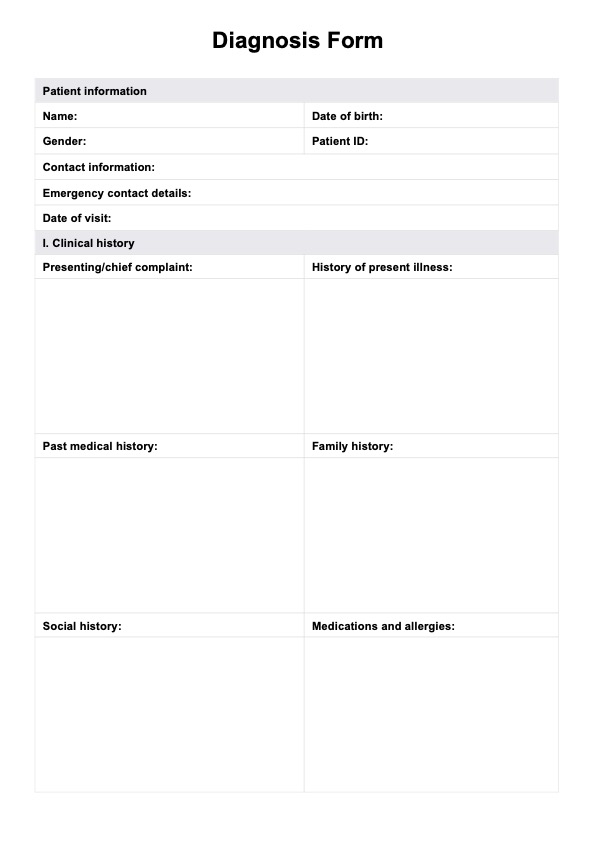To write a diagnosis, start by getting a clear picture of the patient's medical history, including past conditions and medications. Then, do a physical exam to check for any signs or symptoms pointing to a specific condition and order any necessary tests to dig deeper. Once you have all the information, compare the findings with possible conditions and choose the most likely diagnosis based on what you've learned.

Diagnosis Template
Easily document your patients' diagnoses with our Diagnosis Template. Improve your workflow and ensure accurate, organized medical records today!
Diagnosis Template Template
Commonly asked questions
Some common medical diagnoses include asthma, diabetes, pneumonia, and hypertension. These conditions are identified by examining the patient's symptoms, medical history, and test results, such as blood work or X-rays. Each diagnosis helps the doctor understand what's going on and guides the treatment plan.
A medical diagnosis form is a tool healthcare providers use to keep track of all the essential information about a patient, from their symptoms to their test results. It's a helpful way to stay organized and ensure nothing gets missed in the diagnostic process.
EHR and practice management software
Get started for free
*No credit card required
Free
$0/usd
Unlimited clients
Telehealth
1GB of storage
Client portal text
Automated billing and online payments











